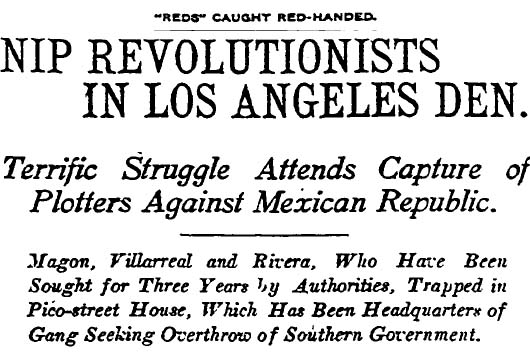Not Worthy

Nov. 11, 1907
Los Angeles
On a trip to Topeka, Kans., to visit relatives, Lena River Packard of Los Angeles met Edgar (or Edwin) Campbell Arnold, a wealthy wholesale druggist who quickly became her constant companion and ardent suitor. Love soon blossomed and in a few months, Edgar arrived in Los Angeles to claim his bride.
A lavish wedding was arranged, bridal showers were given for Lena and the minister was brought to town from Ventura, where the Packards once lived. Edgar gave her a diamond-studded bracelet as a token of their upcoming marriage.
And then the night before the ceremony, “he said goodnight to his fiancee with unusual fervor and left for his hotel at a late hour,” The Times said. Nothing was heard from him the next day and finally the Packards “began to entertain misgivings.”
The betrothed woman shut herself in her room and refused to see anyone, and there were rumors that Edgar left a heart-breaking farewell note. Her father, F.M. Packard, said: “There will be some queer developments before long.”
Reporters located Edgar back home in Kansas and asked if he would comment on rumors that he left a farewell note saying that he was unworthy of Lena. His doctor refused to let him speak.
Attorneys eventually disclosed that six days before his disappearance was reported in The Times, Edgar wrote: “Lena, for God’s sake think kindly of me for what I am doing. It is best for both of us. I don’t ask you to forgive, you can’t. Only when the pain has worn out, thank me for not going on and making your life miserable. I have tried until I am completely worn out, sick mentally and bodily. God forgive me; I am going out of your life. I am not worthy of any good woman’s love. I could never make you happy. Put me out of your existence.”

Lena replied in a letter to Edgar’s mother:
“I just got up from my bed, where I have been since Tuesday evening, and resolved to write you the whole truth. You know how things were in Topeka—you know how Edgar came out to see me. In May, when we became engaged he gave me a beautiful diamond ring and also some diamond earrings. The day after we became engaged, he asked my parents for my hand, and they gave their consent. I loved Edgar with all my heart and I never loved anyone before in my life. Edgar said he loved me and proved it in every way.
“I have stayed home all summer long and worked with love and patience over my wedding clothes. My dear mother and I have worked so hard. Father has spent hundreds of dollars just to have me fixed to be Edgar’s wife. My clothes are beautiful and God only knows what I’ll do with them now.
“He came on the 3rd, Sunday, getting in at 11:30 o’clock and came right to our home. I was overjoyed to see him and he seemed just as glad to see me. We stayed home all that afternoon and talked. He wanted to see my clothes, so I showed him a few dresses and waists, just as much as I thought proper. He seemed to like every one and seemed to feel bad because I had worked so hard on them. He asked me if I put all that work on the wedding gown just because I loved him and I told him ‘Yes.’ In the afternoon, Monday, he gave me a beautiful bracelet set with five diamonds.”
“My life is blighted,” she wrote, “by the man I thought would make me a kind and loving husband.”
The Packards filed a suit for $25,000 ($494,782.31 USD 2005) in 1908, only to discover that Edgar’s claims of being wealthy were lies. In truth, every penny of the family fortune was controlled by his mother, “a woman with an iron will and a sharp tongue who bitterly opposed the marriage.” Edgar feared that he would be disinherited if he went through with the wedding. The Packards received a $3,000 settlement.
Whether she kept the diamonds is a mystery that will never be answered. Of course, the real question is whether Lena ever married. Unfortunately, Proquest is no help here. Edgar was right about one thing: he wasn’t worthy.
Lmharnisch.com
Lmharnisch.blogspot.com
e-mail: lmharnisch (AT) gmail.com
Labels: 1907, 1908, Black Dahlia, Books and authors, LAPD, Streetcars




















